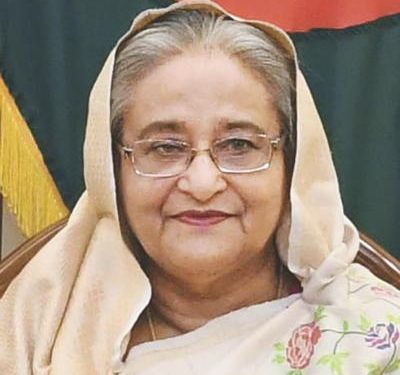Beijing: China Thursday accorded a red carpet welcome to Bangladesh Prime Minister Sheikh Hasina, who held wide ranging talks with her Chinese counterpart Li Keqiang to further consolidate bilateral ties and signed nine agreements.
The nine instruments — five agreements, three memorandums of understanding (MoUs) and a document — were signed in different sectors ranging from aid for the Rohingyas and economic and technical cooperation, investment, power, culture and tourism.
Prime Minister Keqiang welcomed the Bangladesh prime minister as she reached the Great Hall. She was accorded a red carpet welcome and a team of armed forces offered her a guard of honour.
The two leaders held talks for half an hour after which the two countries signed the nine agreements. Under the first agreement titled “Letter of Exchange (LoC) on the Rohingya Refugees Rice Aid”, China will provide 2,500 tonnes of rice to the forcibly displaced Rohingyas from Myanmar, Foreign Secretary Md Shahidul Haque told Bangladesh’s state-run BSS news agency.
Other instruments are in the fields of power grid network, economic and technical cooperation, hydrological information sharing of Yalu Zhangbo/Brahmaputra River and an MoU on cultural exchange and tourism programme.
Hasina is on a three-day visit to China, the first trip to Beijing after her re-election. Hasina is also scheduled to hold talks with President Xi Jinping and other top leaders on improving the bilateral ties and exchange views on issues of mutual interest.
During the bilateral talks, China may press for speeding up of the Bangladesh-China- India-Myanmar (BCIM) economic corridor which has failed to take off.
With an estimated USD 31 billion investments, China has emerged as a major investor in Bangladesh — mainly in the infrastructure and energy sectors — raising concerns in India over growing Chinese influence in the region.
The rapid expansion of Chinese investments in Bangladesh were regarded as the second highest by Beijing after the USD 60 billion China-Pakistan Economic Corridor (CPEC).
China’s investments in Bangladesh included the construction of 6-km long bridge across the Padma river, as the Ganga is known in the country, costing about USD 3.7 billion and the USD 2.5 billion power plant at Payra near Dhaka.
Both the CPEC and the BCIM were the components of the Belt And Road Initiative (BRI) which was mooted by President Xi when he came to power in 2013. The BRI aims to link Southeast Asia, Central Asia, the Gulf region, Africa and Europe with a network of land and sea route.
While the CPEC regarded as the flagship project took off, the BCIM failed to make headway. India has protested to China over the CPEC as it is being laid through Pakistan-occupied Kashmir.
China lately is making efforts to revive the BCIM. The 2800-km BCIM corridor proposes to link Kunming in China’s Yunnan province with Kolkata, passing though nodes such as Mandalay in Myanmar and Dhaka in Bangladesh before heading to Kolkata.
China this month organised the BCIM Forum, an unofficial body of think-tanks from the respective countries at the just concluded China South Asia Business Forum in the Chinese city of Yuxi in Yunnan province.






































